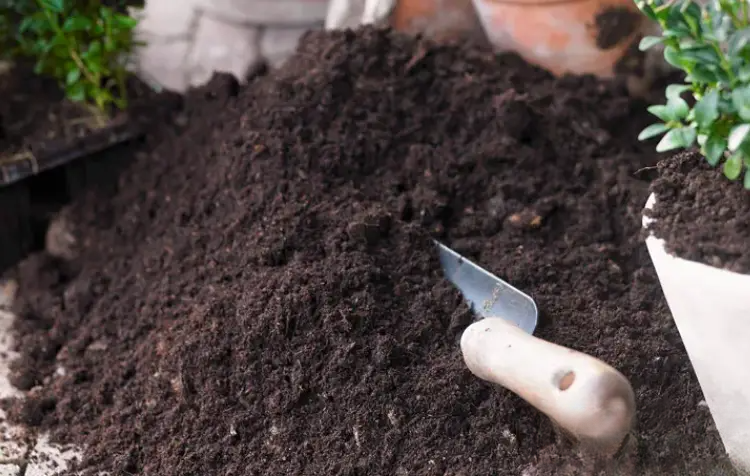Still don't know how to mix soil for growing flowers? Just save this article 10 common soil ratios for flowers
Just like us humans, each plant has its own unique taste.
Some like spicy food, some like sweet food. Soil is the food of plants.
Some plants prefer acidic soil, while others need alkaline soil.
Some like it a little moister, some like it a little drier.
If we want our flowers to bloom well and grow vigorously, we must first prepare the soil for them.
Today I will introduce to you ten recipes suitable for different plants.

01
Universal soil formula
This is a universal formula that is suitable for most of the plants we grow at home.
Because it can balance the three major properties of water retention, drainage and breathability.
Formula: Garden soil: Leaf mold: Perlite: Sand = 2:2:1:1
In this formula, garden soil provides the most basic nutrients and minerals.
Then leaf mold can increase the organic matter in the soil and improve the structure of our soil.
The perlite inside can increase air permeability and drainage.
Sand can further improve drainage.
Applicable plants: succulents, indoor foliage plants, small potted plants
(such as African violets, cyclamen)
02
Soil recipe for cuttings
This formula has very good air permeability and water retention, and is more suitable for use when cutting.
For plants that need constant moisture and good root breathing,
This recipe is also a very good choice.
Formula: peat soil: perlite = 3:1 (for cuttings)
Features: The high water retention of peat soil combined with the air permeability of perlite is very suitable for rooting cuttings.
Applicable plants: Soft-branch cuttings and hard-branch cuttings of most plants , such as roses and chrysanthemums.
03
Acidic environment formula
This formula is more suitable for plants that like acid.
Most of the flowers and trees we plant at home prefer an acidic growing environment.
Therefore, most of the plants grown in our home can be grown with this ratio.
Formula: Mountain mud: leaf mold: rotten wood chips: fertile soil = 3:1:1:0.5
Features: Mountain mud and leaf mold together provide an acidic environment, rotten wood chips increase organic matter, and fertile soil provides nutrients.
Applicable plants: azalea, camellia, blueberry, gardenia, etc.
04
Formula for drought-tolerant, succulent plants
This formula is more suitable for succulents and drought-tolerant plants.
Because it has a very high water retention capacity and is very breathable.
Suitable for drier environments.
Formula: Garden soil: sand: vermiculite = 1:2:1
Features: Sand and vermiculite greatly improve soil drainage and air permeability, and reduce water evaporation.
Applicable plants: Dracaena, Desert Rose, Succulents.
05
Organically Rich Formula
This formula is very rich in organic matter.
Soils high in organic matter improve soil structure.
Increasing soil nutrients can be of great help.
Formula: Leaf mold: pond mud: sand: rice husk ash = 35% leaf mold, 35% pond mud, 15% sand, 15% rice husk ash
Features: Leaf mold and pond mud are rich in organic matter, while sand and rice husk ash improve soil structure and drainage.
Applicable plants: plum blossom, crabapple, pomegranate, clematis
06
High organic matter and high fertility formula
This formula is more suitable for plants that bloom more and bear more fruits.
For example, vegetable gardens or fruit trees will use more.
Because it has high fertility and high organic matter content,
It can make vegetables grow more vigorously and produce more fruits.
Formula: compost soil: leaf mold: garden soil = 3:2:1
Features: Compost and leaf mold provide rich organic matter and nutrients, and garden soil provides a stable foundation.
Suitable plants: perennials, vegetable gardens, fruit trees.
07
Slightly alkaline soil formula
This formula is more suitable for flowers and trees that prefer an alkaline growing environment.
Formula: Garden soil: limestone powder: sand = 4:1:1
Features: Limestone powder fine-tunes soil pH to slightly alkaline, and sand increases drainage.
Suitable plants: Certain types of cacti, Echeveria and succulents.
08
Formulated for aquatic plants
This formula is more suitable for aquatic plants.
It not only allows aquatic plants to be fixed in the container,
It can also purify impurities produced in the water by aquatic plants.
Formula: Aquatic soil: sand: activated carbon = 3:1:1
Features: Aquatic soil provides the structure needed to anchor plants, while sand and activated carbon help to purify water.
Applicable plants: lotus, water hyacinth, and other aquatic plants.
09
Suitable for ground cover plant formula
Cover the ground quickly and keep the soil moist.
Formula: Garden soil: Leaf humus: Perlite = 3:2:1
Features: Leaf mold and garden soil provide nutrients and organic matter, and perlite increases air permeability and soil gaps.
Suitable plants: clover, ground cover dianthus, sedum.
10
Suitable for small space and low load bearing soil formula
This formula is more suitable for use in places with smaller spaces and smaller load-bearing capacity.
For example, our balconies and terraces, which are environments that require load-bearing capacity.
Because this formula is relatively lightweight, it also provides sustained nutrition.
Formula: Light soil: Perlite: Slow-release fertilizer = 3:1:1
Features: Lightweight soil reduces weight, perlite provides aeration, and slow-release fertilizer provides continuous nutrients.
Applicable plants: potted flowers, balcony vegetable gardens, urban roof gardens.
If you can't remember, you can click to follow and collect it to avoid losing it when you need it. You can also share it with friends who like to grow flowers like you.